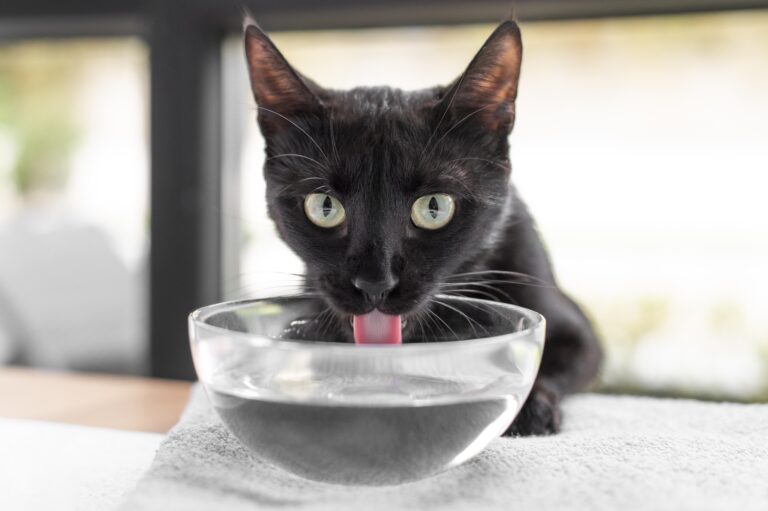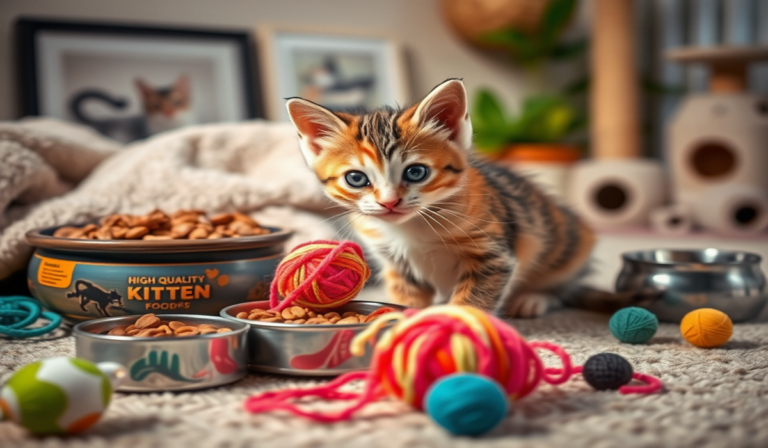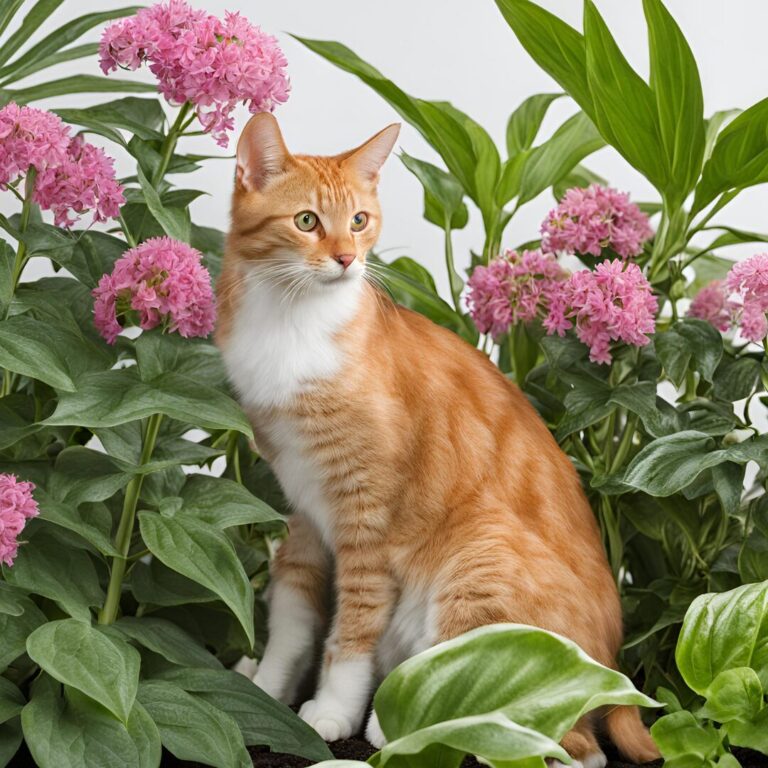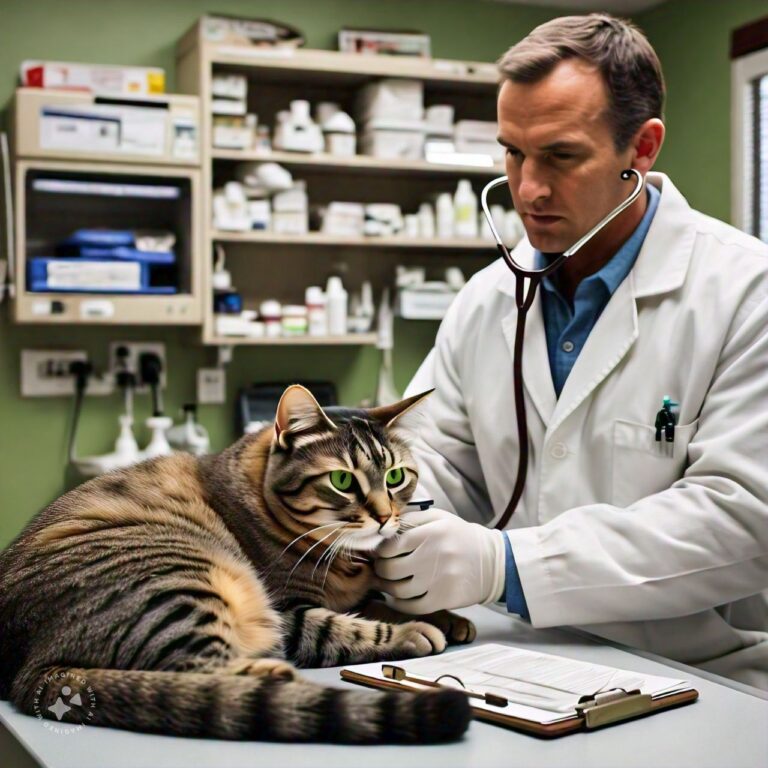When to Remove Dead Kitten from Mother: A Comprehensive Guide
Introduction
The loss of a kitten is a heartbreaking event, both for the cat owner and the mother cat. Understanding when and how to remove a dead kitten from the mother is crucial for her well-being and the survival of the remaining litter.
In this article, we will explore this delicate subject in depth, providing detailed guidance on recognizing the signs of a dead kitten, the emotional impact on the mother, and the proper steps to take when such an unfortunate situation occurs.
Cat Grief: The Emotional Impact on the Mother Cat
Cats, like many animals, have maternal instincts that drive them to protect and care for their young. When a kitten dies, the mother may experience confusion, grief, and stress. It’s essential to recognize that the emotional well-being of the mother cat is a critical factor in the decision to remove the dead kitten.
Signs of Distress in the Mother Cat
The mother cat may exhibit signs of distress if a kitten has died. These signs include:
- Vocalization: The mother may meow or cry more frequently.
- Increased Licking: She may excessively lick the dead kitten to revive it.
- Restlessness: The mother may pace or move the kitten around.
- Depression: A lack of interest in caring for the remaining kittens or in eating and grooming herself.
Understanding these signs is crucial in determining when to intervene and remove the deceased kitten.
Recognizing When a Mother Cat Has a Dead Kitten: When to Act
Before taking any action, it’s important to be certain that the kitten is indeed dead. Newborn kittens are fragile, and there may be cases where they appear lifeless but can still be revived. Here are the signs to look for:
Physical Signs of a Dead Kitten | Symptoms of a Dead Kitten Inside Cat
- Lack of Movement: A dead kitten will be completely still with no signs of breathing.
- Cold to the Touch: The body temperature will drop significantly, making the kitten feel cold.
- Rigidity: The body may become stiff due to rigor mortis.
- Pale Gums: The gums will appear pale or bluish due to a lack of circulation.
If these signs are present, it’s likely that the kitten has passed away, and it’s time to consider the next steps.
When to Remove the Dead Kitten from Mother: The Timing of Removing kitten from Mother Cat
Timing is a critical factor when deciding to remove a dead kitten from the mother. Removing it too soon may cause unnecessary stress to the mother, while leaving it too long may result in health risks for the remaining litter. unfortunately but natural behavior where some cats may eat a dead kitten.
Immediate Removal of Dead Kitten from Cat: Kitten Born Dead
In some cases, immediate removal of the dead kitten is necessary:
- Risk of Infection: If the dead kitten has visible signs of decay or infection, it should be removed immediately to prevent the spread of disease to the remaining kittens.
- Mother’s Health: If the mother cat shows signs of extreme distress or illness due to the presence of the dead kitten, it should be removed promptly.
Delayed Removal of Dead Kitten from Cat: When to Wait
In other situations, it may be beneficial to allow the mother some time to process the loss before removing the kitten:
- Natural Mourning: Cats may need time to understand that the kitten is gone. Allowing her to mourn for a few hours can be part of the natural grieving process.
- Avoiding Additional Stress: Removing the kitten too quickly may cause unnecessary stress to the mother, leading to neglect of the remaining kittens.
How to Remove the Dead Kitten from Cat: How to Remove a Dead Kitten from Its Mother
Removing Dead Kitten from Mother
If you’re faced with the difficult task of removing a deceased kitten from its mother, it’s important to proceed gently. Mother cats, or queens, have strong maternal instincts, and separating a dead kitten can be distressing for both the mother and the person involved. Here’s a step-by-step guide on how to approach this delicate situation.
Observe the Mother’s Behavior for removing dead kitten
Before removing the kitten, observe how the mother cat reacts. Some mother cats instinctively nudge away a deceased kitten, indicating she’s ready for it to be removed. However, if she remains protective, give her a little more time to naturally lets go, as this helps with her grieving process.
Prepare a Safe, Quiet Space for removing dead kitten
Gently approach the mother in a calm, quiet environment. Ensure there’s no noise or other animals around to reduce stress. Speak softly to the mother cat and let her know you’re there in a comforting way.
For safety and hygiene, wear gloves when removing a dead kitten
Wear disposable gloves to handle the deceased kitten. This helps maintain hygiene and prevent the spread of any possible infections.
Gently Lift the Kitten Away from the mother
Slowly and gently lift the deceased kitten from the nest, doing your best not to disturb the remaining kittens. Move steadily to avoid alarming the mother, keeping your movements calm and reassuring.
Offer Comfort to the Mother
After removing the kitten, sit near the mother and offer her comforting words or gentle strokes, if she allows. This reassures her and helps her cope with the loss, especially if she seems distressed or searches for the kitten.
Caring for the Mother Cat and Remaining Kittens After Removing a Dead Kitten: The Aftermath
The removal of a dead kitten can be a traumatic experience for the mother cat. Proper care and attention are crucial in the days following the incident to ensure her emotional and physical recovery.

Emotional Support for the Mother Cat After Removing a Dead Kitten
Cats are sensitive creatures, and the loss of a kitten can take a toll on their emotional well-being. Here are some ways to support the mother cat during this time:
- Provide a Quiet Environment: Ensure that the mother and her remaining kittens are in a calm and quiet space where they won’t be disturbed.
- Offer Extra Attention: Spend time with the mother, petting and talking to her. This can help alleviate some of her stress and anxiety.
- Monitor Her Behavior: Keep an eye on the mother’s behavior for any signs of depression or neglect of the remaining kittens. If she appears overly distressed, consider consulting with a veterinarian.
Health Monitoring for the Remaining Kittens after removing dead kitten
The health of the remaining kittens is paramount. After the removal of a dead kitten, it’s essential to:
- Check for Signs of Illness: Watch for any signs of illness or distress in the remaining kittens, such as lethargy, lack of appetite, or difficulty breathing.
- Ensure Proper Nursing: Make sure the mother is nursing the remaining kittens properly and that they are gaining weight as expected.
- Consult a Veterinarian: If you have any concerns about the health of the mother or her kittens, don’t hesitate to seek veterinary advice.
what to do with a dead kitten
Dealing with the loss of a kitten can be emotionally challenging, but knowing the right steps can help you handle the situation responsibly. First, ensure the kitten is indeed deceased by checking for any signs of breathing or movement.
If the kitten has passed, wear gloves to handle it and place the body in a sealed bag to prevent contamination or pests. Depending on your preference, you can arrange for a respectful burial in your yard (if local laws permit) or contact a veterinarian or animal control for cremation or disposal services.
If the kitten died unexpectedly, consider consulting a vet to understand potential causes, which may help protect other pets. Offering a moment of remembrance for the kitten can also provide comfort during this difficult time.
Preventing Future Losses of Kitten from Cat: Tips for Healthy Kitten Care
While the loss of a kitten can be an unavoidable tragedy, there are steps you can take to minimize the risk and ensure the health of future litters.
Regular Veterinary Care of Cat
One of the most important factors in preventing kitten mortality is regular veterinary care. Ensure that the mother cat receives proper prenatal care, including vaccinations, deworming, and nutritional support.

Proper Nutrition for Cat and kitten
A well-balanced diet is essential for the health of both the mother and her kittens. Make sure the mother cat is receiving high-quality food designed for pregnant and nursing cats. This will provide her with the necessary nutrients to support her and her kittens’ health.
Safe Birthing Environment for Cat and Kitten
Create a safe and comfortable environment for the mother cat to give birth. A clean, quiet, and warm space will reduce stress and increase the chances of a successful delivery.
How to Handle a Dead Kitten in the Litter: should i remove a dead kitten from the litter
If you discover a dead kitten in your litter, it’s essential to address the situation promptly to ensure the health and well-being of the mother and remaining kittens.
Removing the deceased kitten is necessary to prevent the spread of bacteria, infections, or distress to the mother cat. Use gloves to carefully handle the kitten and clean the nesting area thoroughly with safe, pet-friendly disinfectants.
Monitor the remaining kittens closely for signs of illness and provide a calm, stress-free environment.
If you’re unsure how to proceed or notice any abnormal behavior in the mother or other kittens, consult a veterinarian immediately.
FAQs: Caring for a Mother Cat After the Loss of a Kitten
1. How can I tell if a kitten is dead?
A dead kitten will show no signs of breathing or movement, and its body will feel cold and stiff. The eyes may appear glazed or unresponsive. If you suspect a kitten is dead, observe it closely for a few minutes to confirm.
2. Should I remove a dead kitten immediately?
Yes, it is recommended to remove the dead kitten as soon as you are certain it has passed away. Leaving the body in the nest can lead to distress for the mother and other kittens, as well as hygiene issues.
3. How do I remove a dead kitten from the mother cat?
Gently approach the mother cat and reassure her. Use clean hands or gloves to carefully pick up the kitten. Be gentle and avoid sudden movements to prevent alarming the mother.
4. What should I do with the dead kitten after removing it?
Place the kitten in a clean, soft cloth and keep it in a cool place if you plan to consult a vet for confirmation or disposal. Alternatively, you can arrange for burial or cremation as per your preference.
5. Why might a mother cat resist letting go of a dead kitten?
A mother cat may instinctively try to care for or protect her dead kitten, especially if she has not realized it has passed away. This behavior is rooted in maternal instincts and may take time to subside.
6. Is it normal for a mother cat to grieve a dead kitten?
Yes, cats can exhibit signs of grief when they lose a kitten. They may appear restless, vocalize more, or seem withdrawn. Providing comfort and monitoring the mother cat during this time is important.
7. Can leaving a dead kitten harm the other kittens?
Yes, leaving a dead kitten in the nest can expose the remaining kittens to bacteria or disease, potentially endangering their health. Removing the dead kitten promptly helps maintain a safe and clean environment.
8. Should I consult a vet if a kitten dies?
Yes, consulting a vet can help determine the cause of death and ensure that the remaining kittens and mother are healthy. It’s especially important if multiple kittens in the litter have passed away.
9. Can I prevent a mother cat from being distressed after losing a kitten?
While you cannot eliminate her distress, you can provide comfort by keeping her environment calm and ensuring she has access to food, water, and a warm nesting area. Time and care will help her adjust.
10. How can I prevent infections after removing a dead kitten?
After removing the dead kitten, clean the nesting area thoroughly. Replace bedding with fresh, clean material to minimize the risk of infections for the mother and surviving kittens.
11. Should I allow the mother to see the dead kitten before removing it?
Allowing the mother to see and sniff the dead kitten briefly can help her understand that it has passed away. This may reduce her stress and confusion when the kitten is removed.
12. How do I know when it’s safe to approach the mother cat?
If the mother cat is calm and not overly protective, it’s safe to approach. If she appears aggressive or anxious, wait for her to relax before attempting to remove the dead kitten.
13. What causes kittens to die shortly after birth?
Common causes include congenital defects, low birth weight, infection, or complications during birth. Poor maternal health or environmental factors can also contribute.
14. Can a mother cat abandon her litter if a kitten dies?
While it’s rare, some cats may abandon their litter if they perceive a threat or if they are too stressed. Providing a safe and quiet environment can help prevent this behavior.
15. Should I monitor the mother cat after removing a dead kitten?
Yes, monitoring the mother cat is important to ensure she is coping well and that her health is stable. Watch for signs of illness or distress and consult a vet if needed.
16. Is it safe to touch a dead kitten with bare hands?
It’s best to use gloves or wash your hands thoroughly before and after handling a dead kitten to minimize the risk of spreading germs or infections.
17. Can removing a dead kitten disrupt the mother’s milk production?
Removing a dead kitten should not directly affect milk production, but stress or illness in the mother can. Ensure she is comfortable and healthy to support milk production for the surviving kittens.
18. How long will a mother cat search for her dead kitten?
A mother cat may search for her dead kitten for a few hours or days. Reassuring her and maintaining a calm environment can help her adjust more quickly.
19. Should I replace the dead kitten with a stuffed toy?
In some cases, placing a stuffed toy in the nest can comfort the mother and help her redirect her maternal instincts. Ensure the toy is clean and safe.
20. What steps can I take to prevent kitten deaths in the future?
Provide proper prenatal care for the mother, ensure a clean and safe birthing area, and consult a vet regularly. Early detection and treatment of health issues can improve survival rates for future litters.
Conclusion
The decision to remove a dead kitten from the mother is a delicate and challenging one. Understanding the signs of a dead kitten, the emotional impact on the mother, and the appropriate timing and method of removal are essential for the well-being of both the mother and the remaining litter.
By providing proper care and attention during this difficult time, you can help ensure a healthy and supportive environment for the mother cat and her surviving kittens.
If you have any concerns about the health of the mother cat or her kittens, it’s always best to consult with a veterinarian. They can provide guidance and support tailored to your specific situation, ensuring the best possible outcome for your feline family.
References:
- Cornell Feline Health Center
- International Cat Care
- American Veterinary Medical Association (AVMA)







